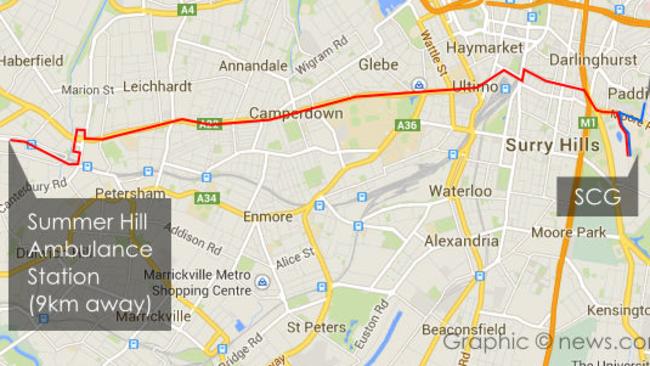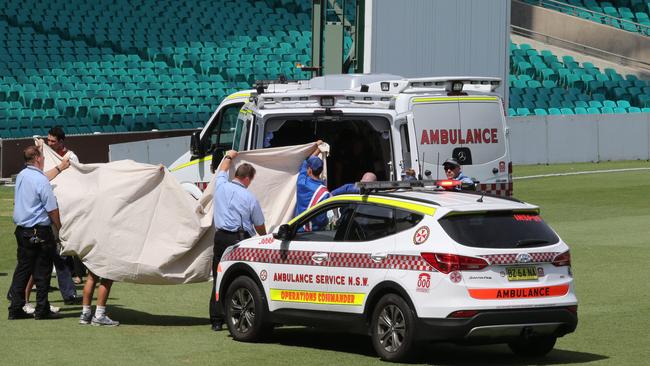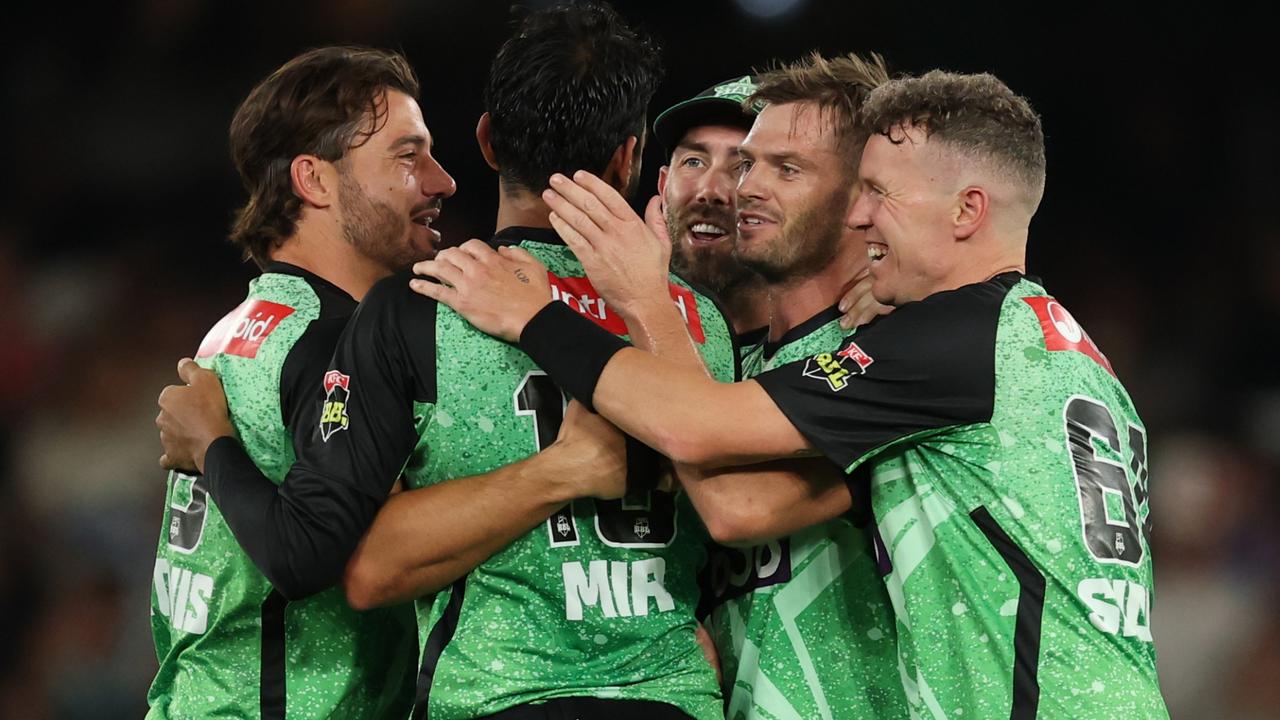Summer Hill ambulance crew sent to treat Phillip Hughes first
AN ambulance crew from the other side of Sydney was likely the first ones sent to treat Phillip Hughes, despite the fact that a station was located just 800m away.

THE first ambulance sent to treat Phillip Hughes likely came from the other side of Sydney, in Summer Hill, despite the closest station being located just 800m away.
The Summer Hill station in Sydney’s inner west is 10km away from the Sydney Cricket Ground and the ambulance took 23 minutes to arrive. It was beaten by a second ambulance from Randwick, 4km away, sent after desperate officials rang the emergency line a second time.
But the closest station to the SCG is just 800m away in Paddington.
Australian Paramedics Association secretary Gary Wilson told news.com.au that the feedback from members was that the Summer Hill crew was the first one dispatched to the SCG.

Mr Wilson said he could not be sure of where the crew was when the call came through because they don’t always return to their stations after each job, but he said it was likely they were coming from a distance.
“They were out of the area (of the SCG) otherwise it wouldn’t have taken them so long to get there,” Mr Wilson said. “But they were the closest resource.”
Mr Wilson said it was his understanding that there were issues related to “trolley block” at hospitals nearby the SCG. In NSW, paramedics have to wait with patients at emergency departments until a bed is available before they can return with their trolley to the ambulance.
He said trolley block was a “whole of health issue” and could not be fixed just by Ambulance NSW. Doctors, nurses and paramedics were working hard but required extra resources including for those at the control centre who do the dispatching.
“It needs the hospital to take action, it needs more beds, nurses and doctors, which Ambulance NSW doesn’t have control over,” Mr Wilson said.
“It is trying to make the best of inadequate resources as part of a wider health issue.”

Australian Paramedics Association media liaison Steve Pearce told news.com.au that there were a number of variables at play when identifying which crews were sent to an emergency and this included “trolley block” at hospitals.
“Our feedback from members was that trolley block was in existence at nearby hospitals including Prince of Wales (Randwick),” Mr Pearce said. “So this delay for an attending ambulance, while tragic, isn’t isolated.”
When asked about why an ambulance was not sent from the closest station at Paddington, he said that the union did not have access to data that could provide a snapshot of where resources were at any given time.
“Our members start at a designated station and they may not get back to it all day, it just depends on the dynamic flow of work,” he said.
Hughes arrived at St Vincent’s Hospital in Darlinghurst about 2km away, more than an hour after he was struck on Tuesday. He died on Thursday afternoon.
Doctors said Hughes had received good treatment on the ground.
“What I can say is he arrived at the hospital in very good condition from a resuscitation and we proceeded with our treatment”, Dr Tony Grabs, the head of trauma for St Vincent’s Hospital said.
Amid criticism and confusion surrounding the ambulance response time, NSW Health Minister Jillian Skinner on Thursday afternoon met with NSW Ambulance Commissioner Ray Creen.
TIMELINE:
2.23pm: Phillip Hughes hit while playing at the SCG
2.29pm: First triple-0 call made, ambulance dispatched from Summer Hill
2.37pm: Second triple-0 call made, ambulance dispatched from Prince of Wales Hospital, Randwick
2.44pm: Ambulance from Randwick arrives at SCG, seven minutes later
2.52pm: Ambulance from Summer Hill arrives, 23 minutes after call

RELATED: Critical delays after Phil Hughes collapsed at the SCG
National team doctor Dr Peter Brukner said that ambulance waiting time was more relevant when the injured person was not being treated.
“I think by any standard or observation, he was receiving excellent quality treatment from Dr Orchard and Dr Stanley and the paramedics at the ground.
Dr John Orchard is the NSW team doctor, and Dr Tim Stanley is an intensive care specialist from Newcastle, who was watching the game from the stands. They both attended to Hughes on the ground, where they began CPR.



